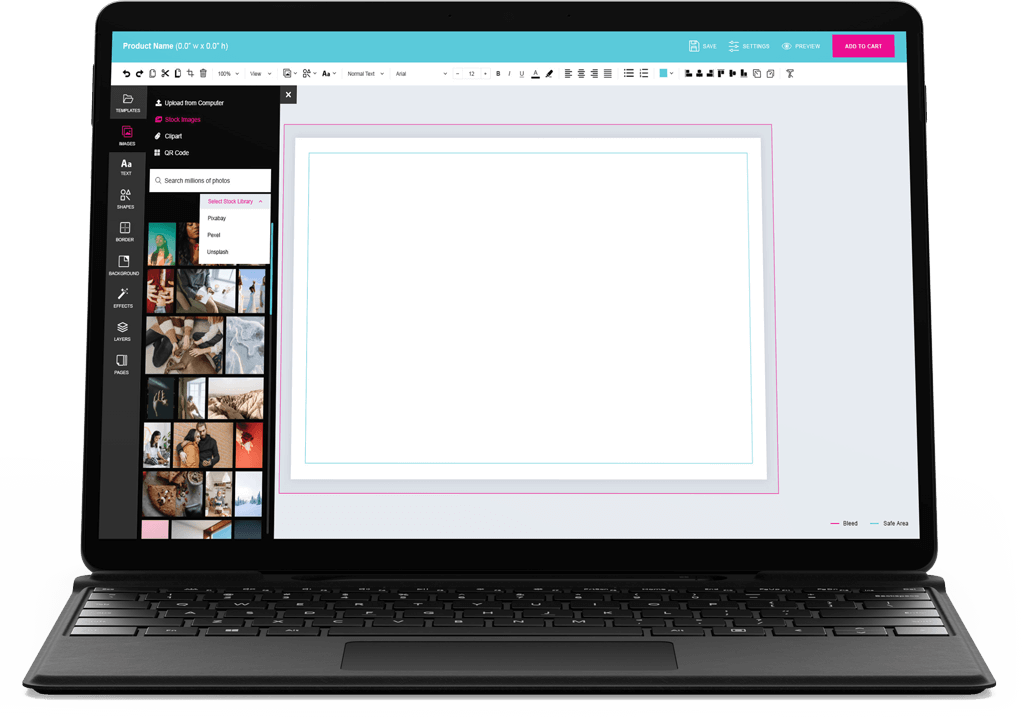Within the rapidly evolving landscape of the printing industry, web-to-print technology has become a revolutionary element, connecting the gap among traditional printing practices and the digital era. Because companies are increasingly trying to streamline their operations, cut errors, and improve customer experiences, comprehending this technology is essential. This comprehensive guide seeks to clarify web-to-print solutions, examining how they revolutionize the printing landscape and the benefits they bring to print shops and organizations alike.
Ranging from enhancing order management and work processes to facilitating customization and personalization, web-to-print solutions is transforming the way printing services operate. As we investigate the main attributes, integration methods, and cost structures, we will also examine the distinctions between web-based printing and traditional printing methods. At the end of this write-up, you will have a clear comprehension of how this technology can elevate your printing enterprise and contribute to its enduring growth.
Comprehending Web-to-Print Software
Web to Print software is a platform that permits customers to design, modify, and request printed materials digitally. This system streamlines the order process for both companies and clients, enabling a more smooth workflow. Users can utilize a variety of pre-made designs and editing tools through a digital interface, eliminating the necessity for specific design software. Whether it is company cards, pamphlets, or marketing materials, the web-to-print solution allows individuals to oversee the print process from initiation to completion.
One of the core capabilities of the web-to-print solution is its capacity to facilitate personalization and customizing. Individuals can import their own designs, add text, choose colors, and select various layouts. This function is particularly advantageous for organizations seeking to build a solid brand identity, as they can create tailored promotional products that appeal to their target audience. With tools like variable data printing, the platform can automatically generate personalized content for multiple customers, improving interaction and impact.
Furthermore, web-to-print software considerably improves order handling and operational effectiveness. By simplifying many of the laborious tasks traditionally involved in the printing industry, such as proofing and order tracking, companies can conserve time and reduce mistakes. Integrated e-commerce functionalities enable print shops to handle orders directly through their website, providing users a hassle-free purchasing experience. This transition not only boosts operational effectiveness but also results in increased user satisfaction and loyalty, vital for prosperity in a fierce print market.
Benefits and Features of Web-to-Print Solutions
Web2Print solutions offer a multitude of pros that significantly boost the productivity and performance of print operations. One of the primary benefits is the efficient ordering process, which allows customers to make and customize their orders online at any time. This ease not only boosts customer satisfaction but also reduces the need for manual order entry, diminishing the likelihood of errors. By streamlining the order management process, print shops can dedicate more on production and fulfillment rather than managerial tasks.
Another important feature of web-to-print software is its ability to provide extensive customization options. Customers can make personalized products by choosing templates, uploading images, and changing text directly on the platform. This degree of personalization encourages consumers and promotes engagement, leading to more fruitful sales conversions. Additionally, the software often includes user-friendly design tools that permit clients to visualize their projects before placing an order, ensuring that the end product matches with their expectations.
Additionally, web-to-print solutions often come equipped with powerful integration capabilities, allowing businesses to link their e-commerce platforms smoothly. This integration enhances the overall workflow by coordinating inventory, keeping tabs on orders, and handling customer data effectively. As https://zenwriting.net/gaugeroll1/transitioning-the-shift-moving-to-web-2-print-software , print shops can maintain a higher degree of accuracy in their operations while utilizing data analytics to better understand customer preferences and improve their offerings. These features in combination contribute to increased productivity, minimized operational costs, and a better competitive edge in the ever-evolving print industry.
Future Trends and Advancements in Web-to-Print
As the print industry continues to develop, Web-to-Print solutions is set to play a key role in its future. One of the most significant trends is the incorporation of artificial intelligence and automated learning technologies. These advancements will enable print companies to streamline various tasks, from developing and tailoring print products to better overseeing orders and stock. https://telegra.ph/Web-2-Print-Software-Transforming-the-Printing-Industry-02-12 of AI will enable data-driven decision-making, allowing businesses to examine client preferences, forecast trends, and tailor marketing strategies, providing a more tailored experience for clients.
Sustainability will also be a dominant theme in the future of Web-to-Print technology. As sustainability challenges rise, print businesses are increasingly adopting sustainable methods. This includes using eco-friendly materials and adopting solutions that cut down excess and energy use. Web-to-Print software will innovate to facilitate these efforts, providing resources for clients to choose eco-friendly choices and track their print projects' environmental impact. Companies will not only focus on profitability but also on contributing positively to the environment.

Finally, cloud services will continue to revolutionize how businesses run within the Web-to-Print landscape. The shift to cloud technology ensures that software updates, protection, and expansion become more easier for print shops of all sizes. This democratization of access means that smaller businesses can leverage state-of-the-art tools previously available only to larger businesses. As the software landscape advances, businesses will create new ways to boost customer experiences, optimize workflows, and adapt to changing market needs, further reinforcing the role of Web-to-Print in the contemporary printing environment.
